★ VHS box scans
★ JJBA game history ft. N'doul
★ cel collection
★ fanart
★ fan soundtrack
..
.
.
.

★ VHS box scans
★ JJBA game history ft. N'doul
★ cel collection
★ fanart
★ fan soundtrack
.
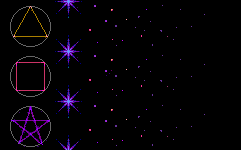 | My Guide to Appreciating the JoJo's Bizarre Adventure OVA |
Part I
i don't want the JJBA OVA to become lost media or even simply be difficult to locate. i believe it's a special piece of animation & JoJo history, something of its kind that we will literally never see again.
if you can't secure it on dvd/vhs, the OVA can be downloaded with subs & dubs from the internet archive (dubs streamed here) or on youtube (missing the first 2 episodes of the 2000 half.) or, you can ask me very nicely, and i will give it to you.
i will be including clips, gifs, and audio on this page. my credentials are that i'm an artist and a genius at least as far as this goes. as an artist, JJBA and Araki completely reformatted my brain and awoke in me an excitement about art that was waning as i faced a future of dispassionate burnout, and convinced me to find purpose and even inspiration in my own impulses and interests. key to this was the fun i had (still have) with my partner and friends as we delved into it together— it wouldn't have been the same without them, i have no clue where i'd be or what i'd be doing. i adore the series for those personal reasons but i look at it and see something conclusively special and, just as much, i adore the way Araki speaks about his art. i take his work seriously and so i love to read and watch how he feels and thinks about what he does. i cherish the fact that shared with the public are decades of an artist's ouvre— art, story, commentary, retrospection.
this website is a shrine only to the 1993-1994 half of the anime adaptation of Part 3, Stardust Crusaders. it's too bad, but in my opinion the 2000-2002 half strips away almost every redeeming feature i'm going to cover here, replacing it with a stark grey nothing, charmless and uninspired. if you wanna see Hol Horse you'll have to watch it. although... the one episode that Is worth watching from that half is the last one, 7 (Justice) because that fight is COOL and Avdol lights Jotaro's ciggie for him. here, see for yourself
... alright! now we're good.
if you're unfamiliar, OVA/OAV is "original video animation." it's generally a short-run adaptation for home video (as opposed to a TV/theatre release) with many of them produced during the bubble economy (80s-90s) when studios would spring for it. they range in length, but are typically under 12 episodes and some are essentially just a short film. unlike how "direct to video" in the US means some crap you buy from the CVS dvd bin, with OVAs, because they're not being broadcasted like a tv series, they have a more lenient production schedule and so receive a more lavish treatment. they can also be darker, sexier, and generally more mature since broadcast censors aren't in place. they are/were extremely popular.
some examples: Angel's Egg, Cyber City Oedo 808, Golden Boy, Hunter x Hunter, Black Jack, Tenchi Muyo, Record of the Lodoss War, Earthian. depending on popularity of concurrent projects, some series are bumped from OVA to film production— Mamoru Oshii planned to direct a six-episode Jin-Roh adaptation, but was put on Ghost in the Shell. and due to Ghost in the Shell's popularity, Jin-Roh itself became a self-contained film. Katsuhiro Otomo's anthology project Memories (1995) was planned as an OVA, but developed into a full theatrical production in collaboration with Satoshi Kon, Studio 4°C, Madhouse, Yoko Kanno... to name a few.
the JJBA OVA was produced by A.P.P.P, known for Roujin Z, Robot Carnival, Cream Lemon, Golden Boy, and the shockingly nice-looking episodes of saturday morning cartoon from my childhood, Cadillacs and Dinosaurs. A.P.P.P no longer exists as of 2021, when its founder, Kazafumi Nomura, passed away.
the JJBA OVA was written and directed by Hiroyuki Kitakubo (Cream Lemon, Akira, Golden Boy, Blood The Last Vampire) who's known for subtle gestures and facial expressions in his work, which you'll notice. we've also got Eiji Yamanaka (Lupin III, Bubblegum Crisis, Macross Plus) Takashi Kobayashi (Durarara, Sakura Wars, Slayers, Yuri!!! On Ice) Yasuhito Kikuchi (Angel Cop, Golden Boy, Harlock: Endless Odyssey, Patlabor) and Hideki Futamura (Akira, The Animatrix: Beyond & Second Renaissance, Perfect Blue, X, Vampire Hunter D: Bloodlust.)
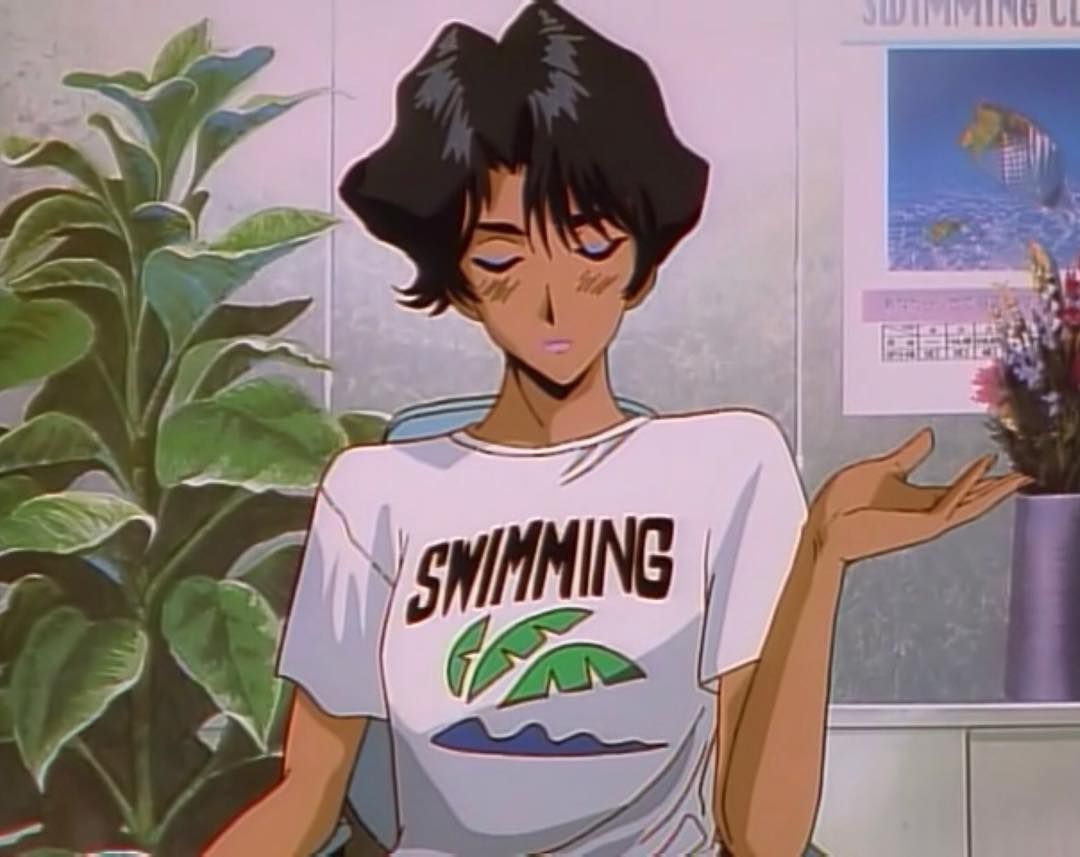
Golden Boy
Junichi Hayama (Berserk, Big O, Fist of the North Star, Sailor Moon R & SuperS, Golden Kamuy, FMA Brotherhood) is credited as character designer, chief animation director, cover artist, and key animator. everyone listed here directed/wrote/storyboarded/animated different episodes. the art style, too, changes depending on who's at the helm.
i don't think the OVA is lacking in legitimacy, but most people are surprised when i mention that Otomo's assistant, Satoshi Kon, was borrowed as a key animator and supervisor on multiple episodes.
i think the TV anime's insistance on matching Araki's modern style is a redundant and limiting choice. maybe i'd feel differently if the colour direction was better, or the animation more fluid... but when i read about how Araki works, it becomes clear that he views his drawings as drawings. pen on paper. they're illustrations, he's writing a book. so adhering to that style in a format that can achieve something different, i don't understand the point. i don't view his drawings as being guidelines for animation, but when i read JJBA, i still imagine the scenes and characters in motion, with lighting and colour and forms that can twist in space. the OVA, i feel, is a good synthesis of key components made fluid for film.
when watching the OVA, you're just going to have to get over how you think it looks. you might've been told it looks weird and shitty or that it was relegated to the ash heap of history for this reason and that's wrong on both counts. the OVA is still widely celebrated for its atmosphere and animation, and the weight it gives to the events it portrays. if you've watched any vintage anime before, it doesn't exactly stand out as some kinda wack exception.
as for colours, remember Araki himself doesn't really set too many canonical colours; he approaches illustration as a graphic form where colours are intended to play off of one another for maximum effect. you have to appreciate Jotaro's magenta in these first episodes. gorgeous contrast in this landscape.
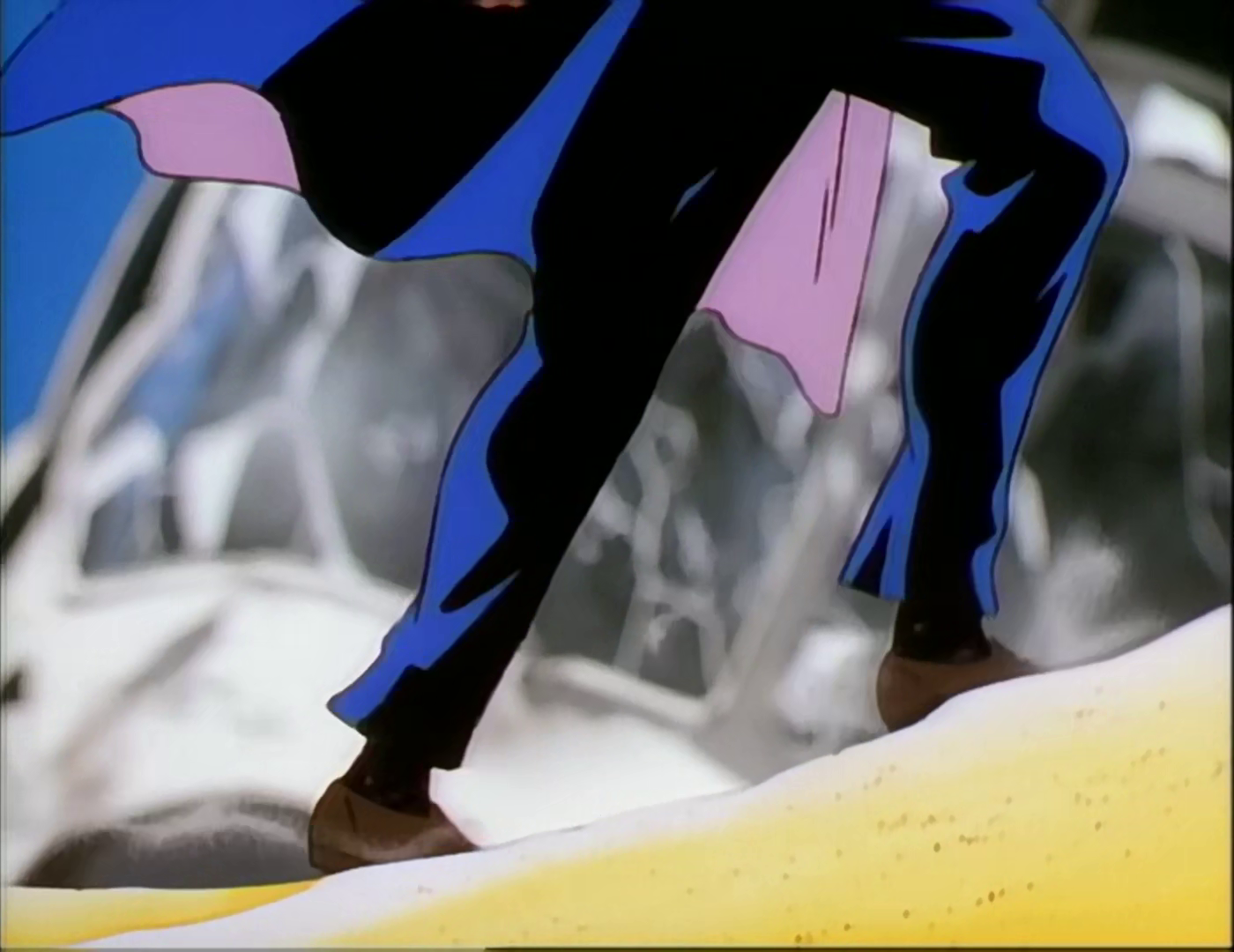
so if you get sidetracked by what you think you're seeing, you'll seriously miss the forest for the trees. i understand JJBA already asks a lot of you— Araki's indulgent and philosophical approach to manga makes for something original and inimitable. it's a series about much more than just ass-beatings. you suspend disbelief and let yourself be convinced and enveloped by Araki's unique visual language. you have to, in order to access the emotional rawness that only increases in complexity with each part, his command of which is equally formidable. that thing he calls a beautiful eulogy of humanity.
and if you can get it on vhs, it's very crisp and colourful.
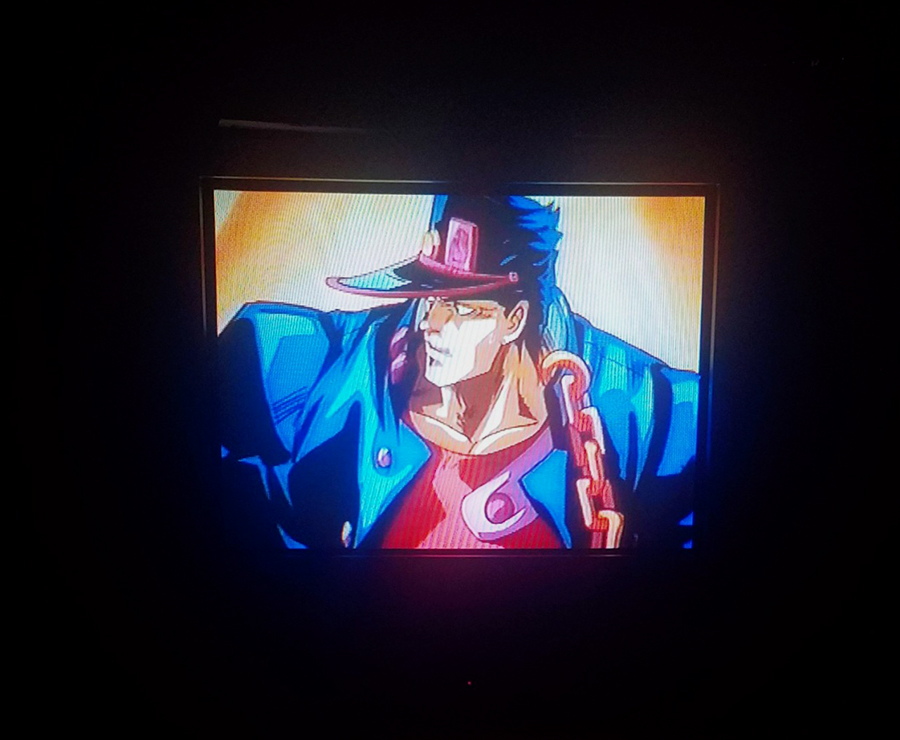
let's get started properly with the opening credit sequences.
you should see both openings— 1993 and 2000— at least once, even if you choose not to watch the 2000 half of the OVA. (the idea that you would choose not to watch the 1993 half is... inconceivable and therefor irrelevant.) they still link together to portray some history. is it accurate to the manga? not necessarily, but who cares. remember, this is an adaptation. today we're at a point in cinema where the lowest common denominator is given the highest priority. we're at a point where "realism" of detail, of tying up every loose end so there's no need to rely on gripping emotion or room for imagination, takes precedent. lighting is ugly. colour is slapped on after the fact. even modern anime is covered in colour-grading and other post-production effects.
manga and animation are different formats with different strengths, so this OVA sought to commit to a select few parts of the story with full force. the openings serve as a basis for this version of the story without really overriding what we know to be true from the manga. so in that sense, yes, it's accurate: it sets the scene without going through each event from the past, which would take up valuable time, and this way it remains a vibey mystery.
1993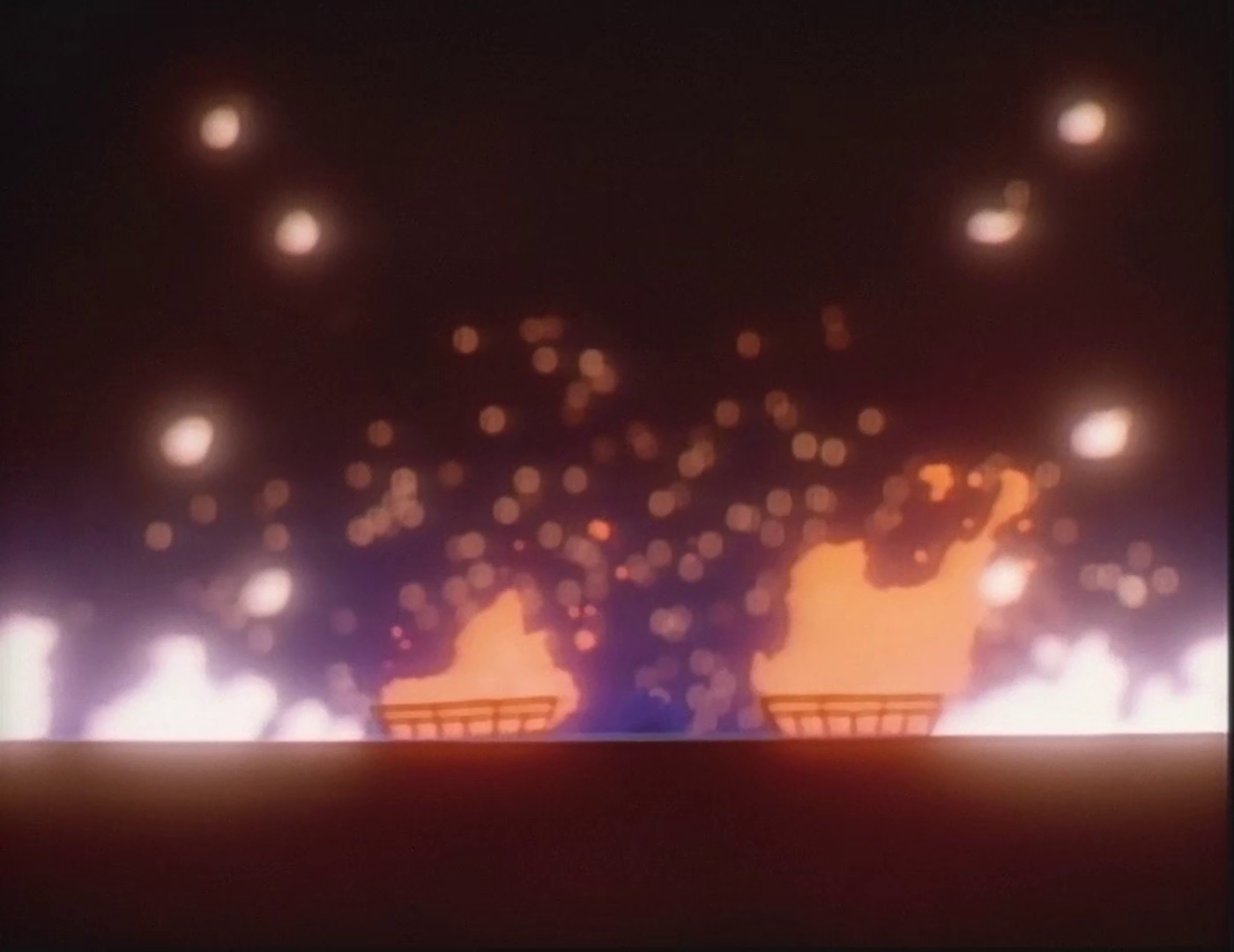
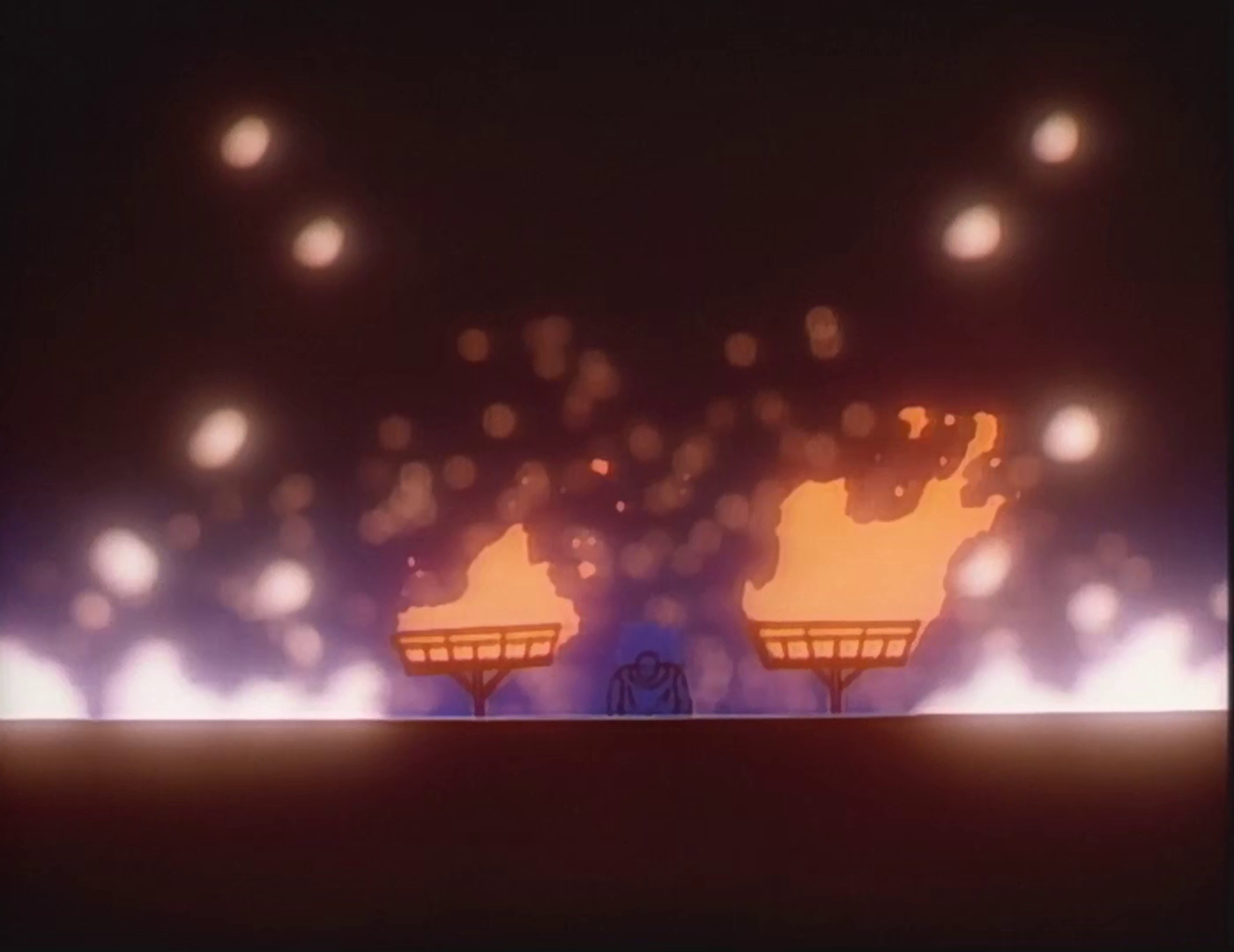
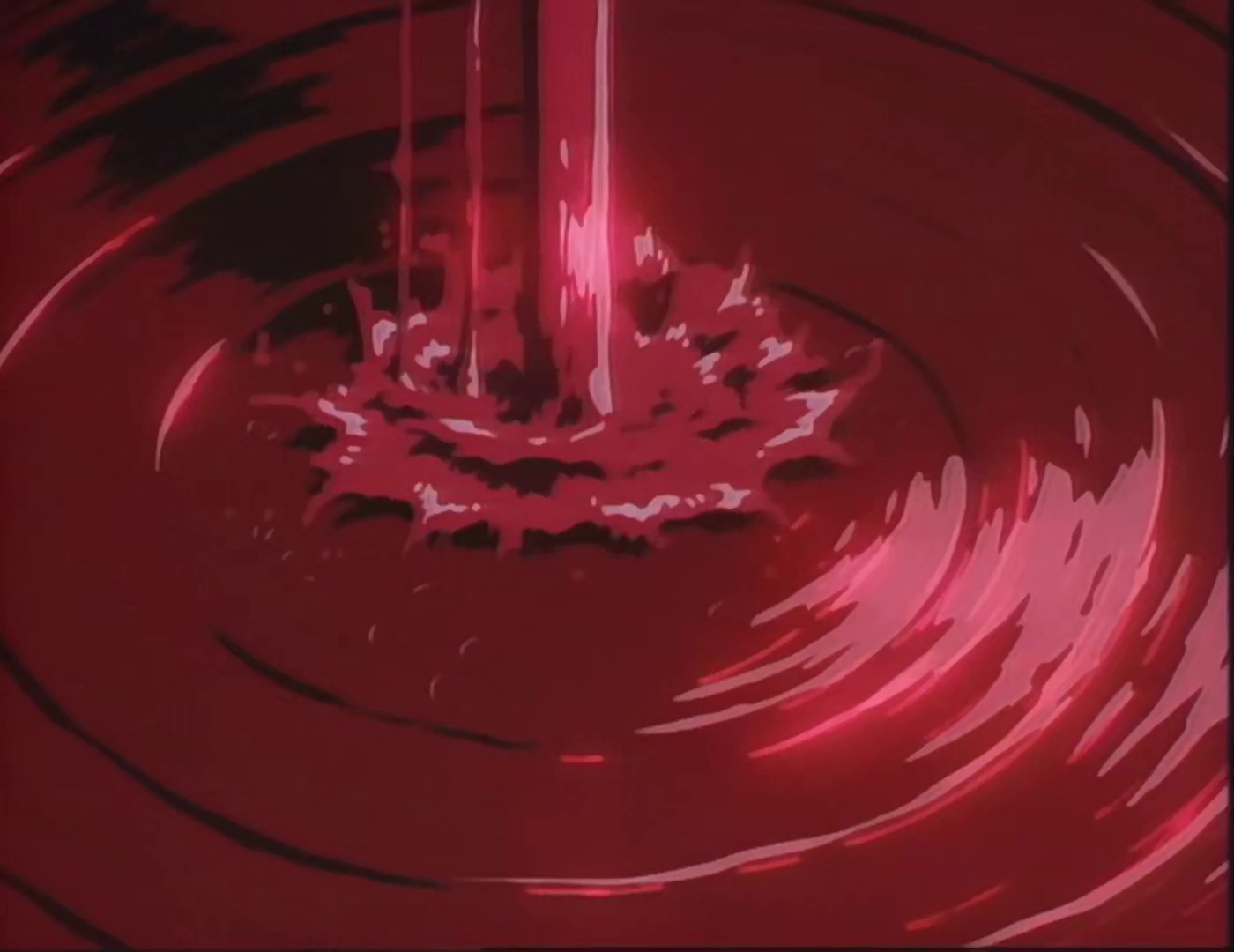
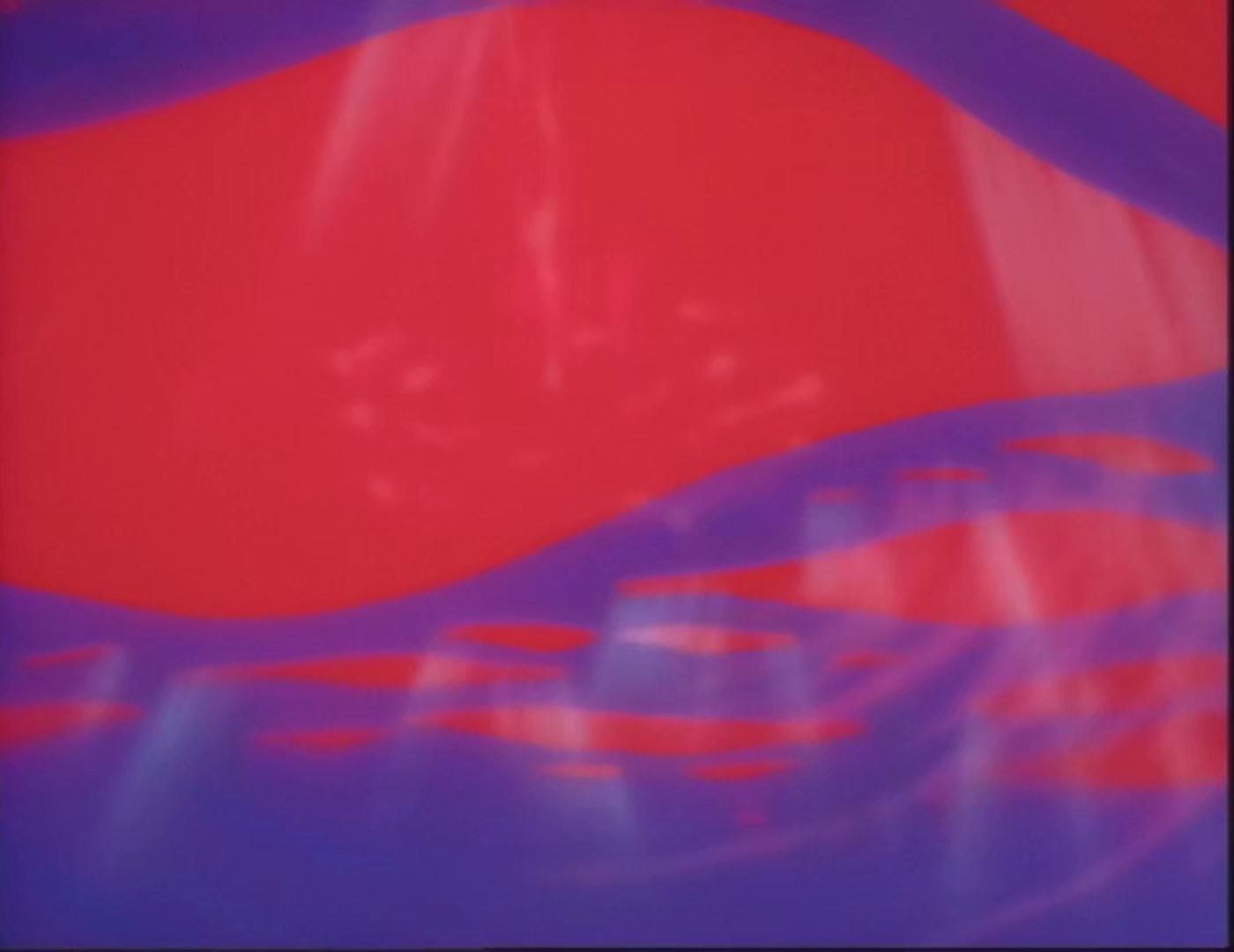
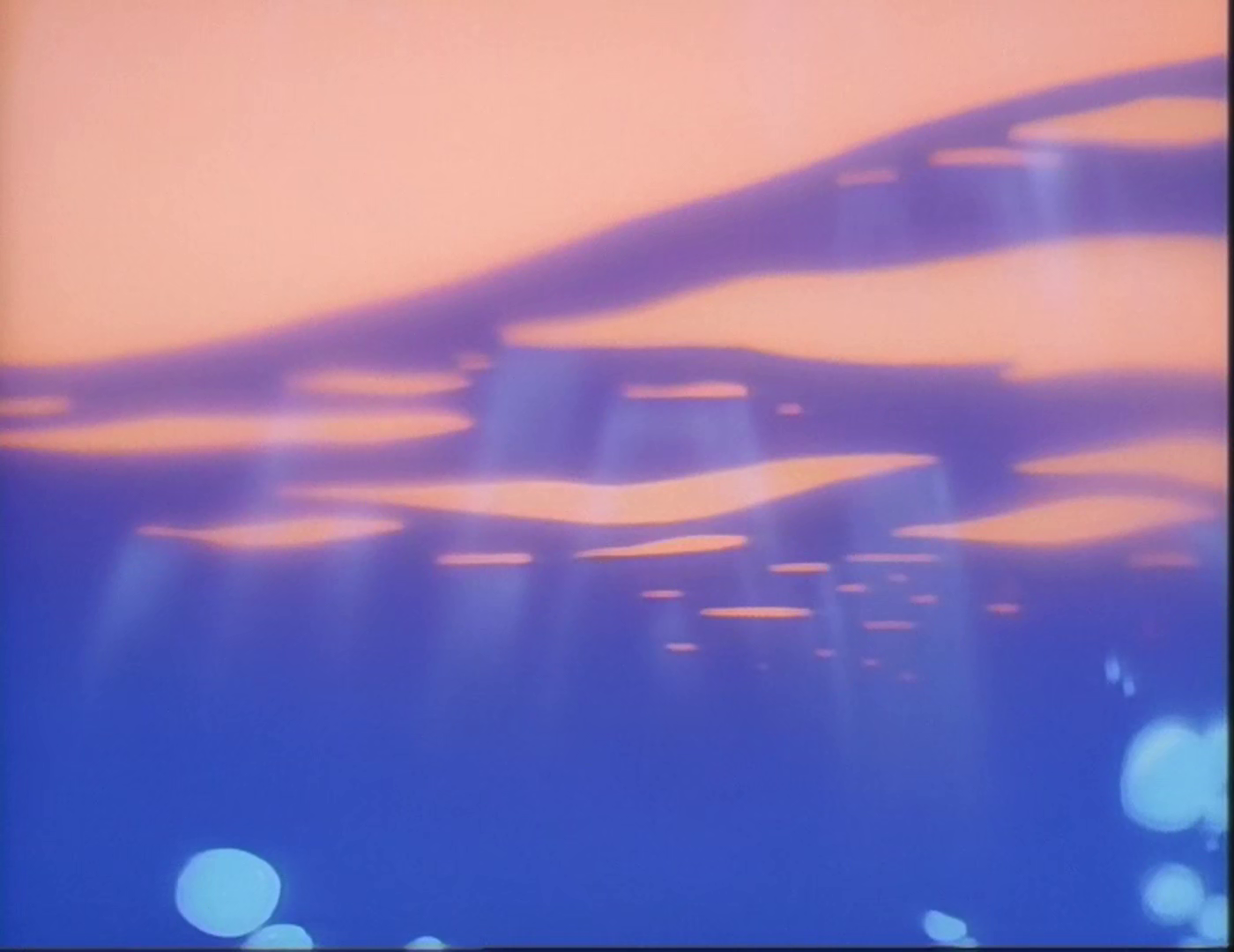
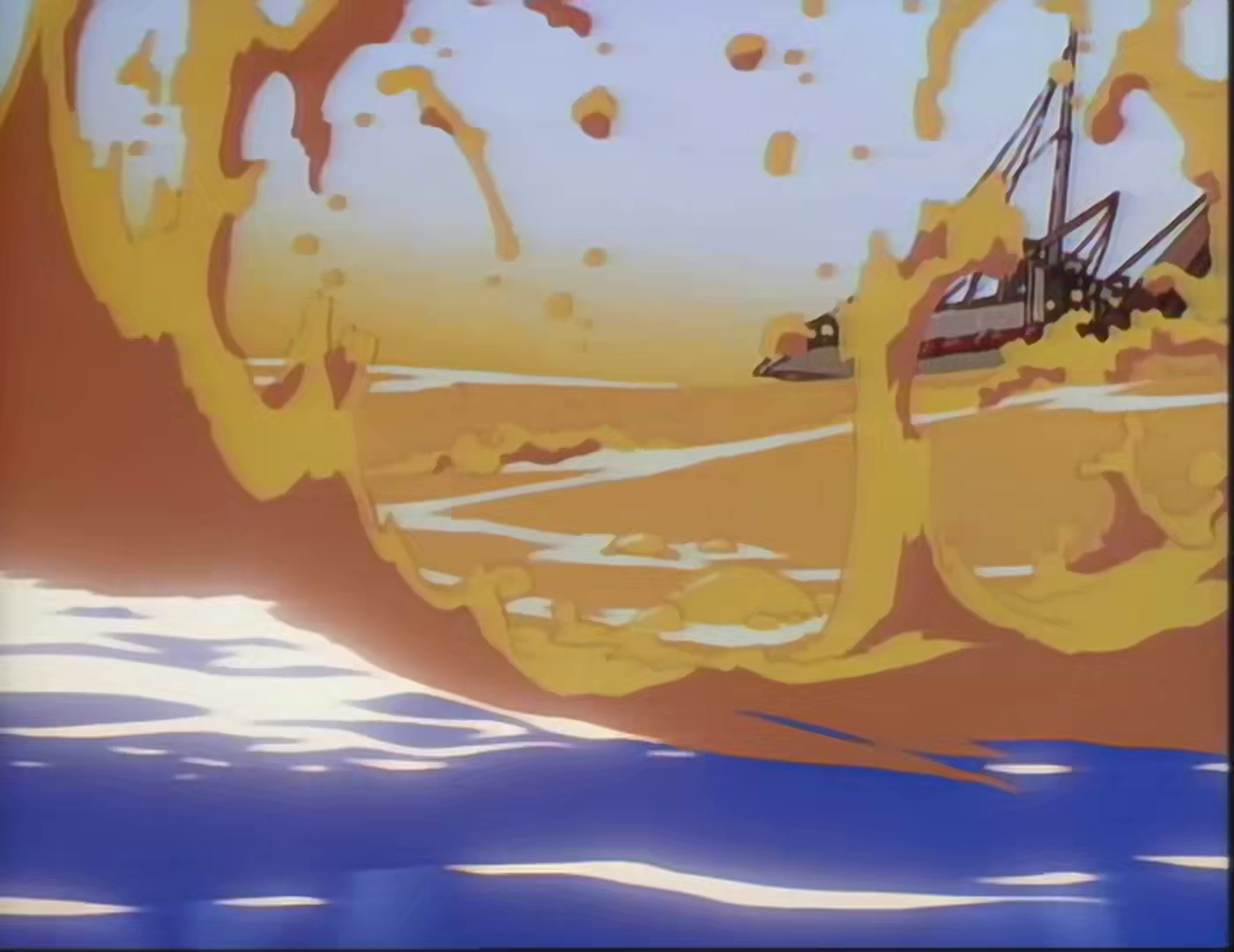
the music was done by Marco D'Ambrosio, who was freshly out of his teens at the time. it calls to mind the scores of 70s-80s horror films. Dio's theme is inexplicably the haunting "Nessun Dorma" by Puccini. The sound engineering was done by Skywalker Sound (the sound division of Lucasfilm.)
the JJBA OVA begins with what's basically the turning point in Stardust Crusaders; the "Jesus meeting the Devil in the desert" moment, if you will. except much more humanising, and therein lies the bittersweetness of it.
the fight against N'doul. according to forums and blogs from the time and since, general consensus is that the original plan was to complete these two episodes only. Araki liked the result so much that further episodes were requested. this section of the story was chosen as the feature because, the OVA being produced for fans largely already familiar with the series, this fight is when all the protagonists are finally together.
i'd first like to draw attention to the light and colour.
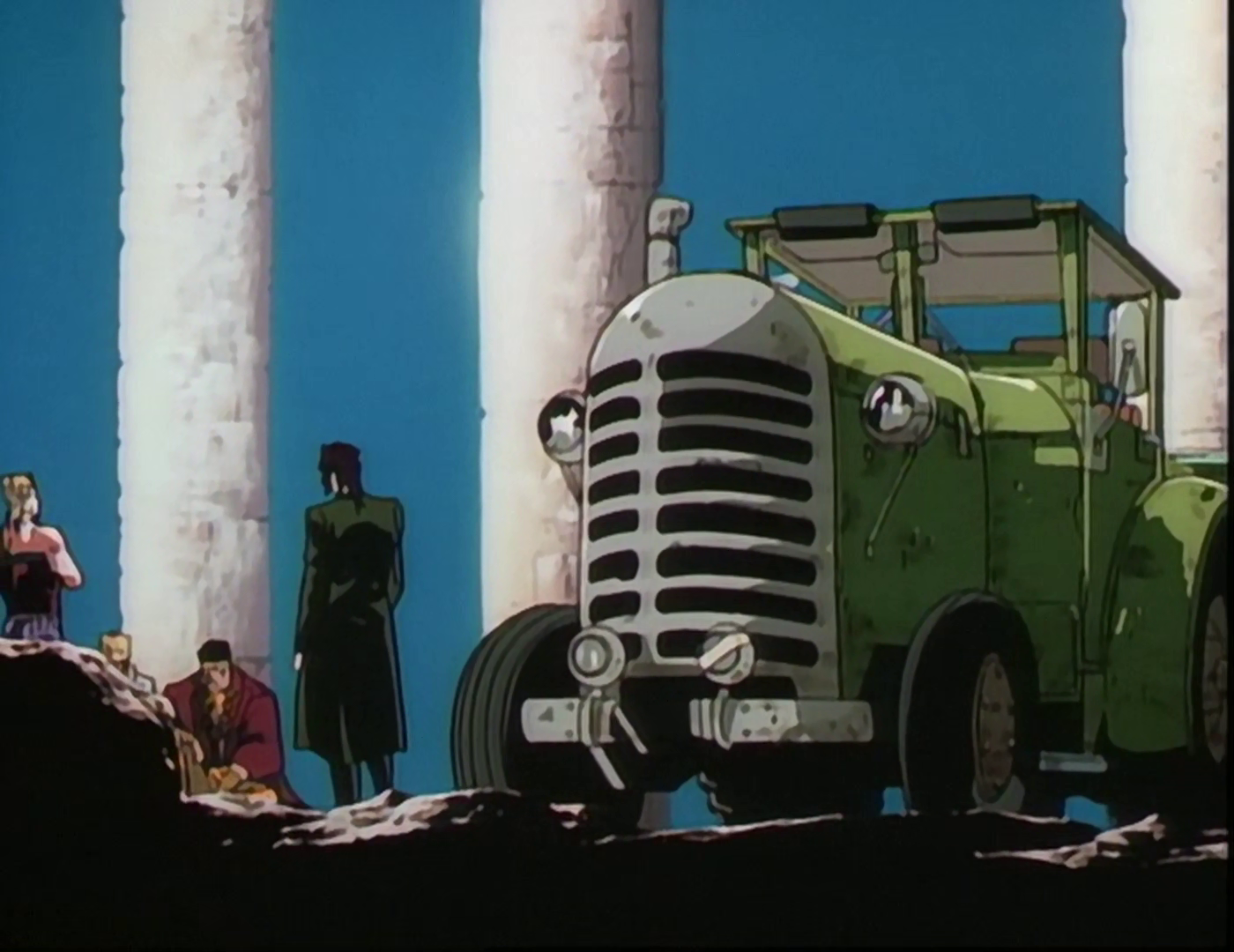
it's a bright noonday sky in the desert. the 2010s TV version employs what i'd call "local colour"— it's not very interesting or atmospheric and relies on a lot of digital overlays. here in the OVA, these rich colours are hand-picked and painted. no garish colour-grading or arbitrary gaussian blur. the blinding light is oppressive. the glow on the horizon, plunging shadows, absence of shadows, it tells us where we are, and where we are has specific features beyond just an empty expanse of sand (although we will get to that.)
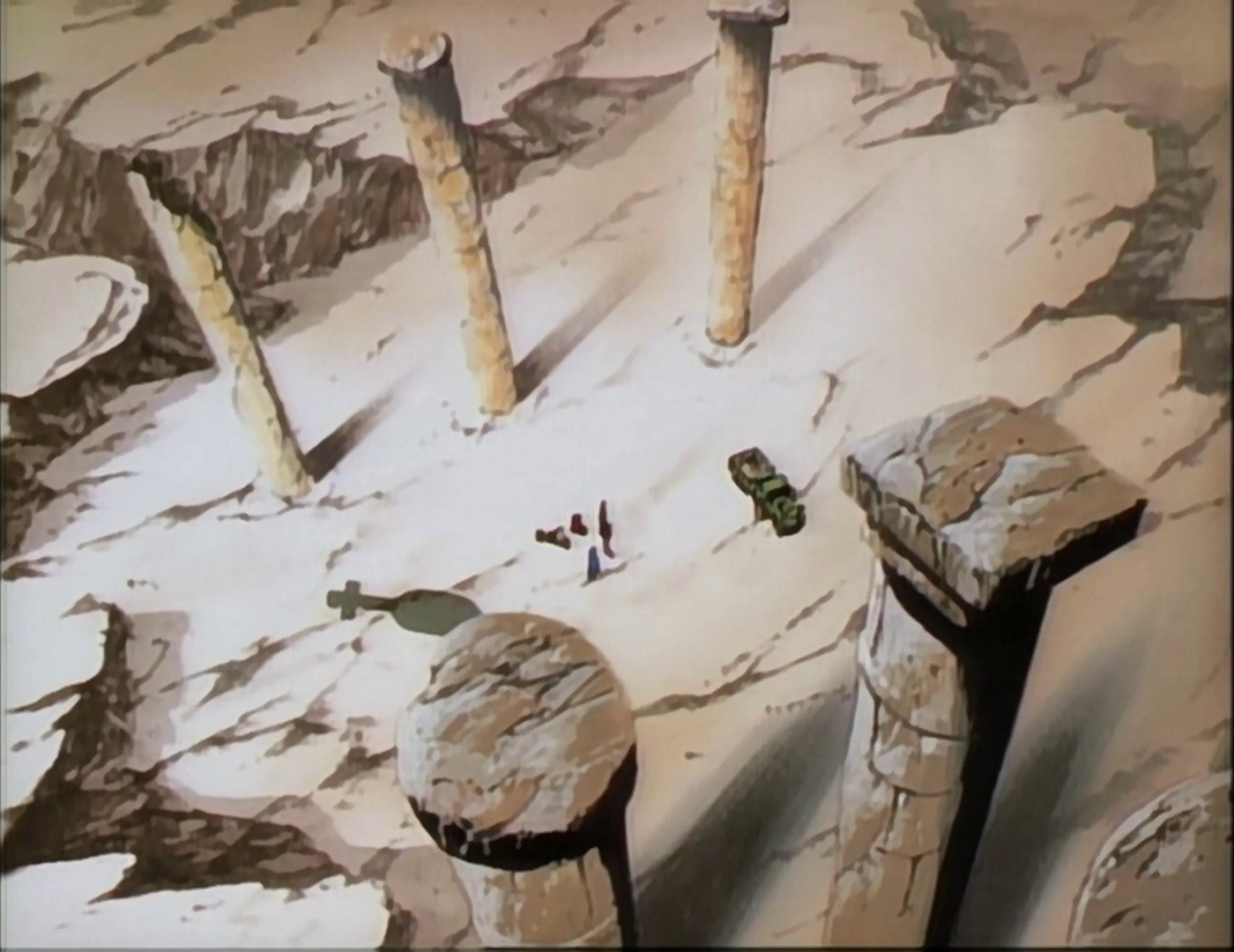
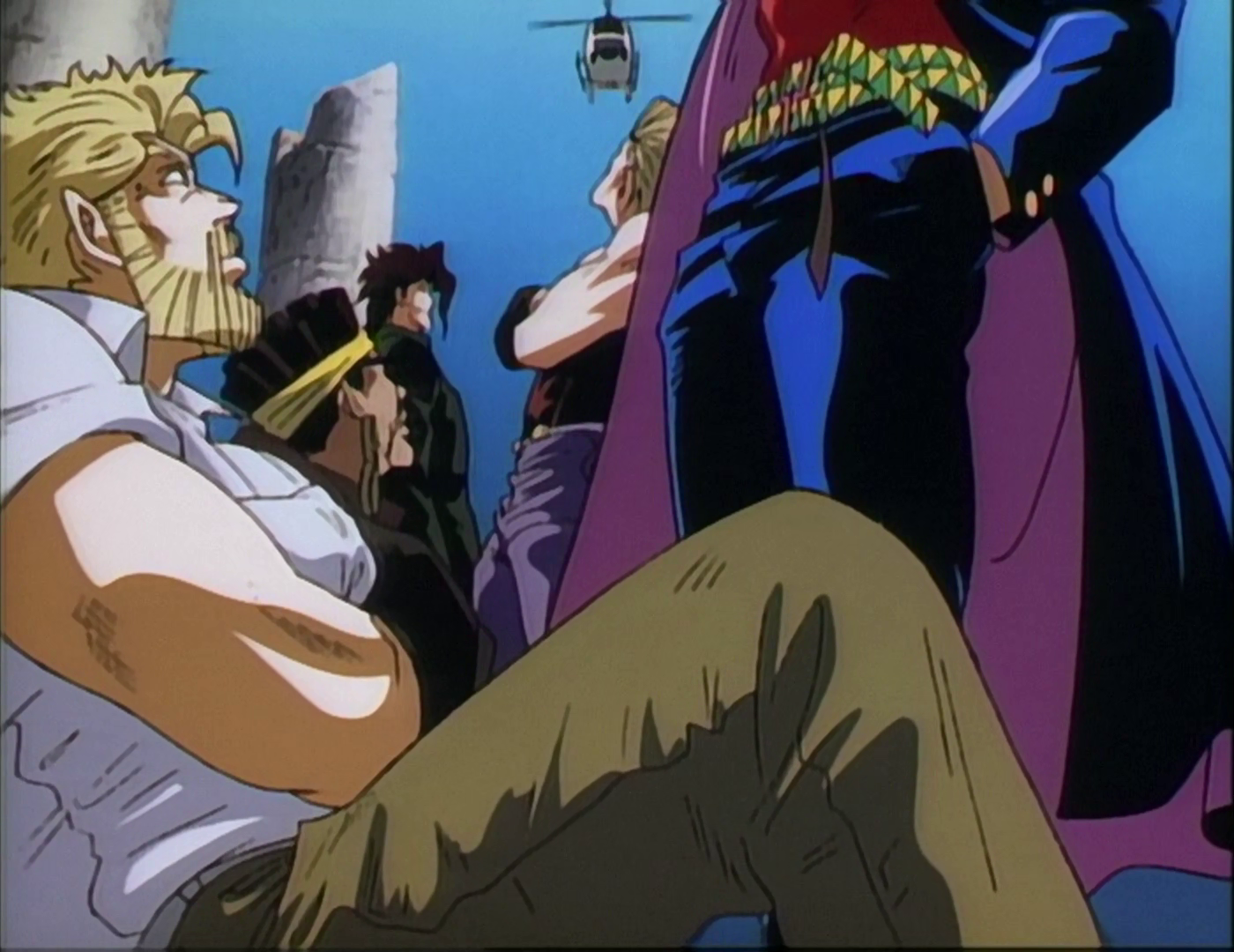
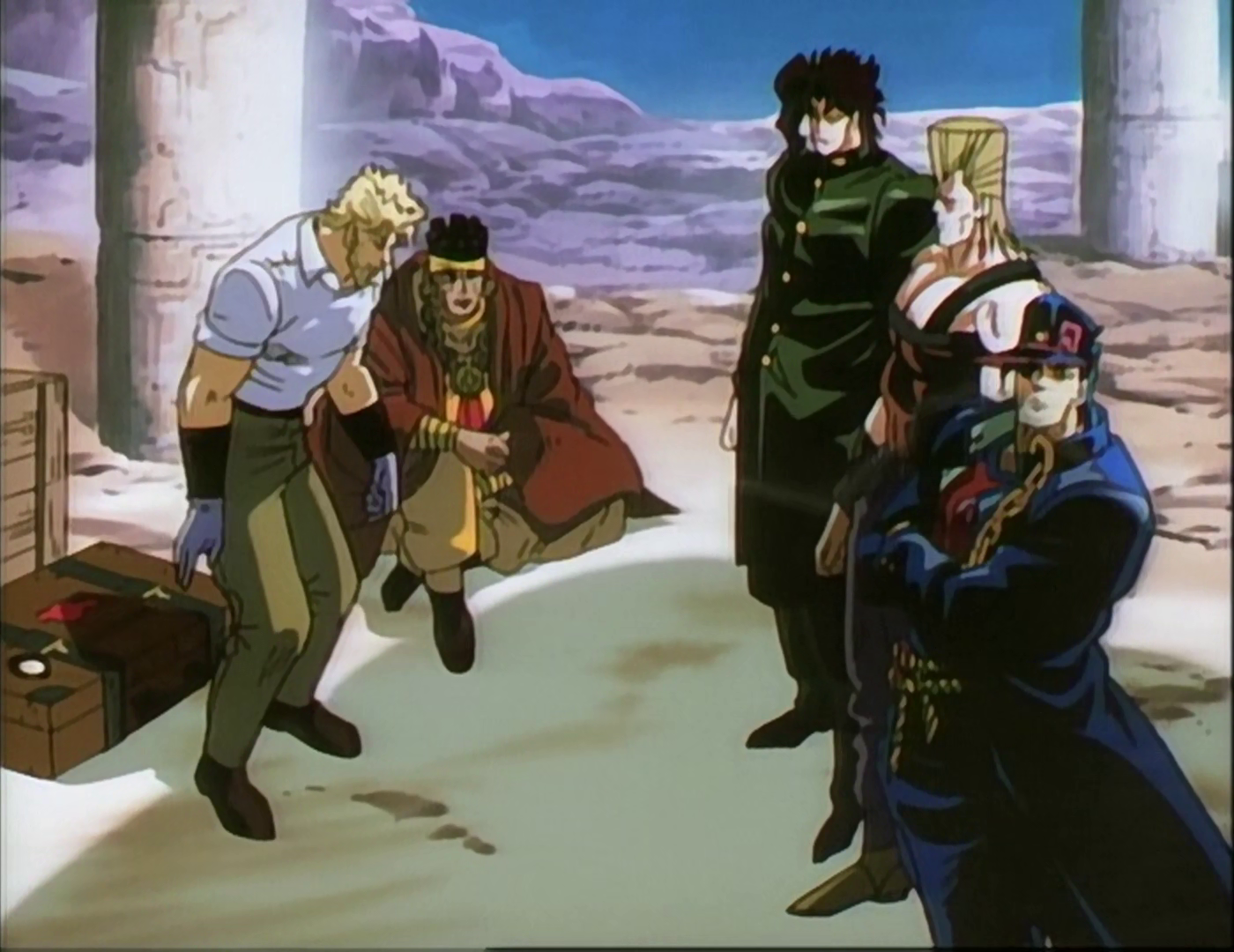
when watching, i'd also like to point out expressiveness in faces and body movements, what they do with their eyes, their hands. these screenshots are all from the first ~10min of the episode
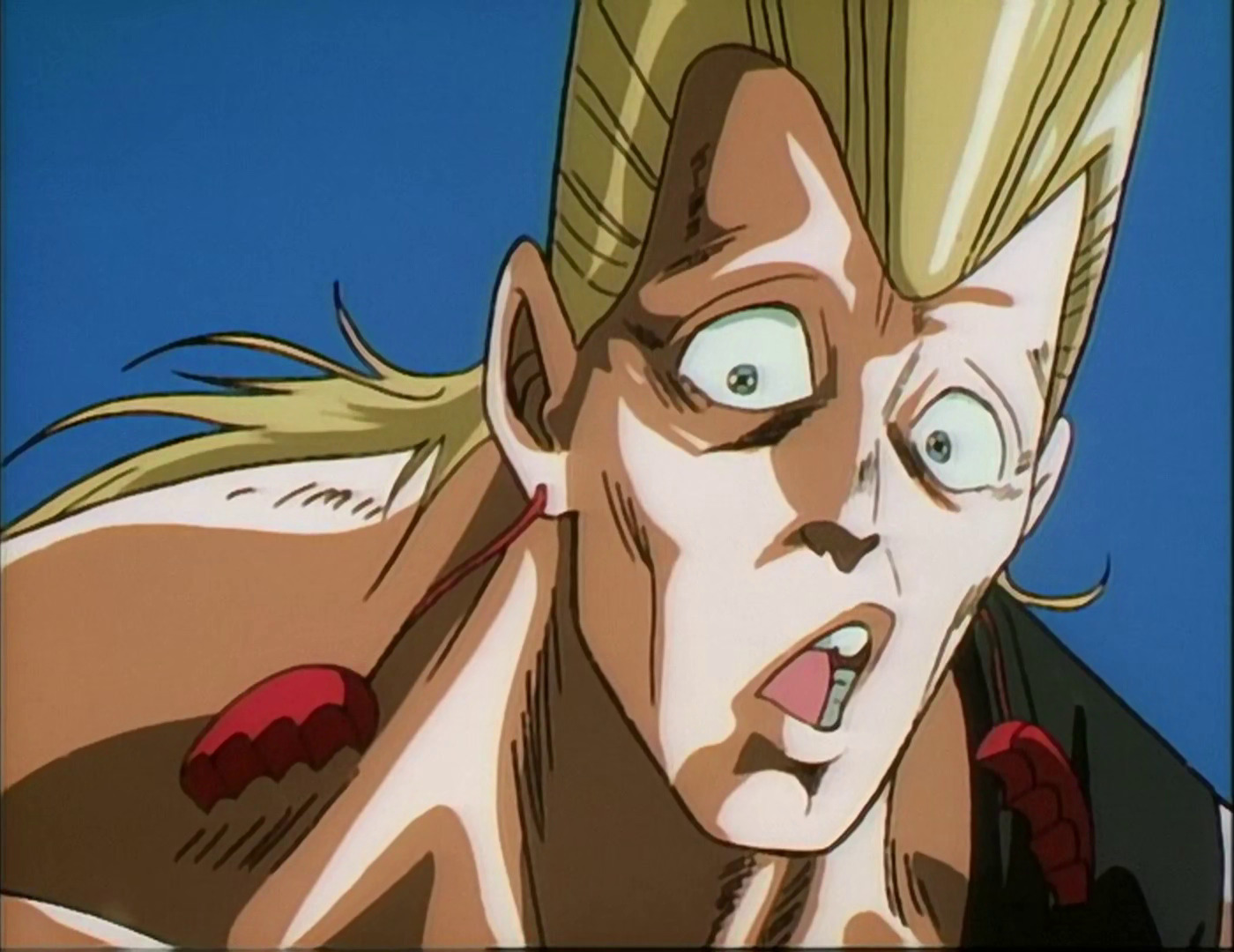
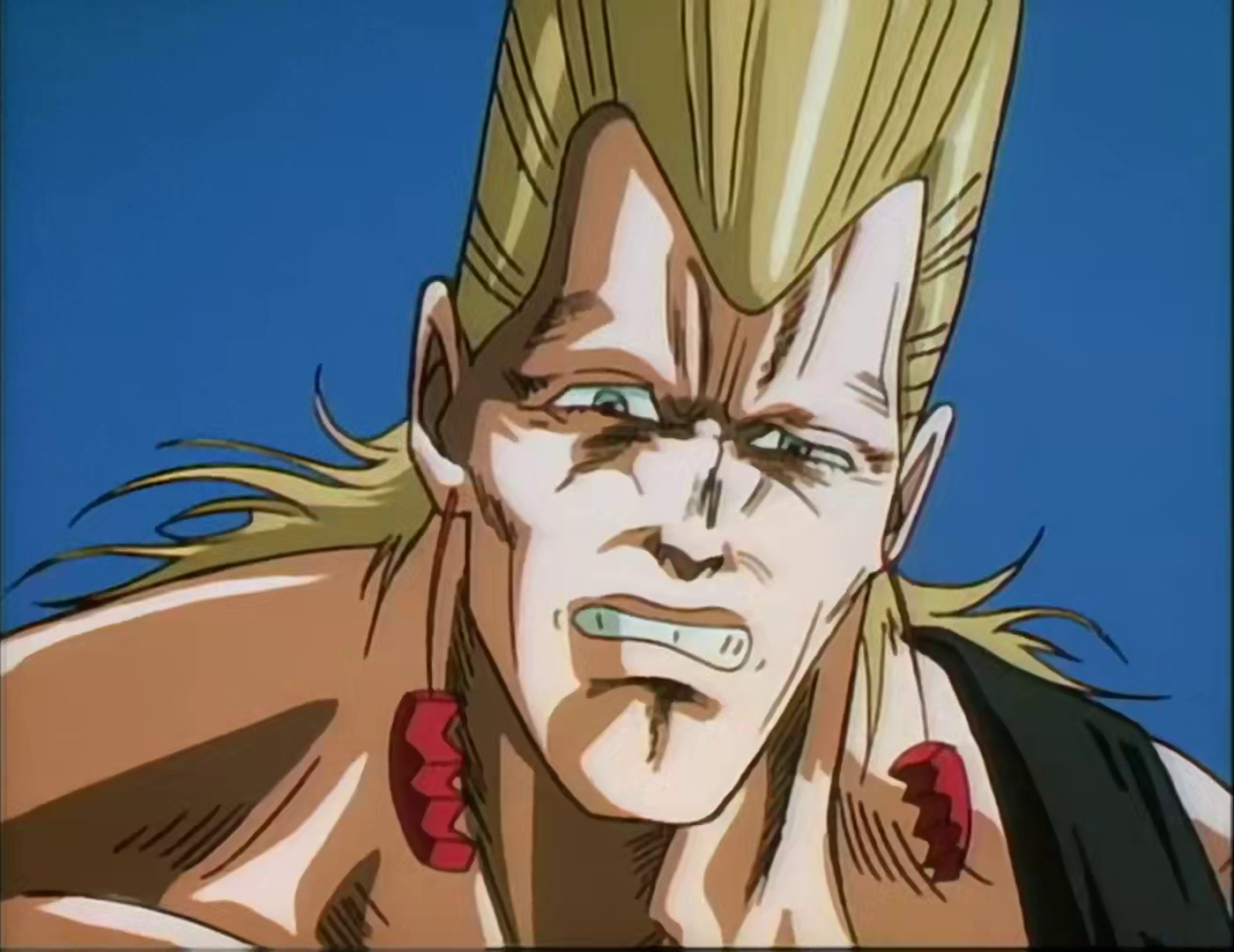
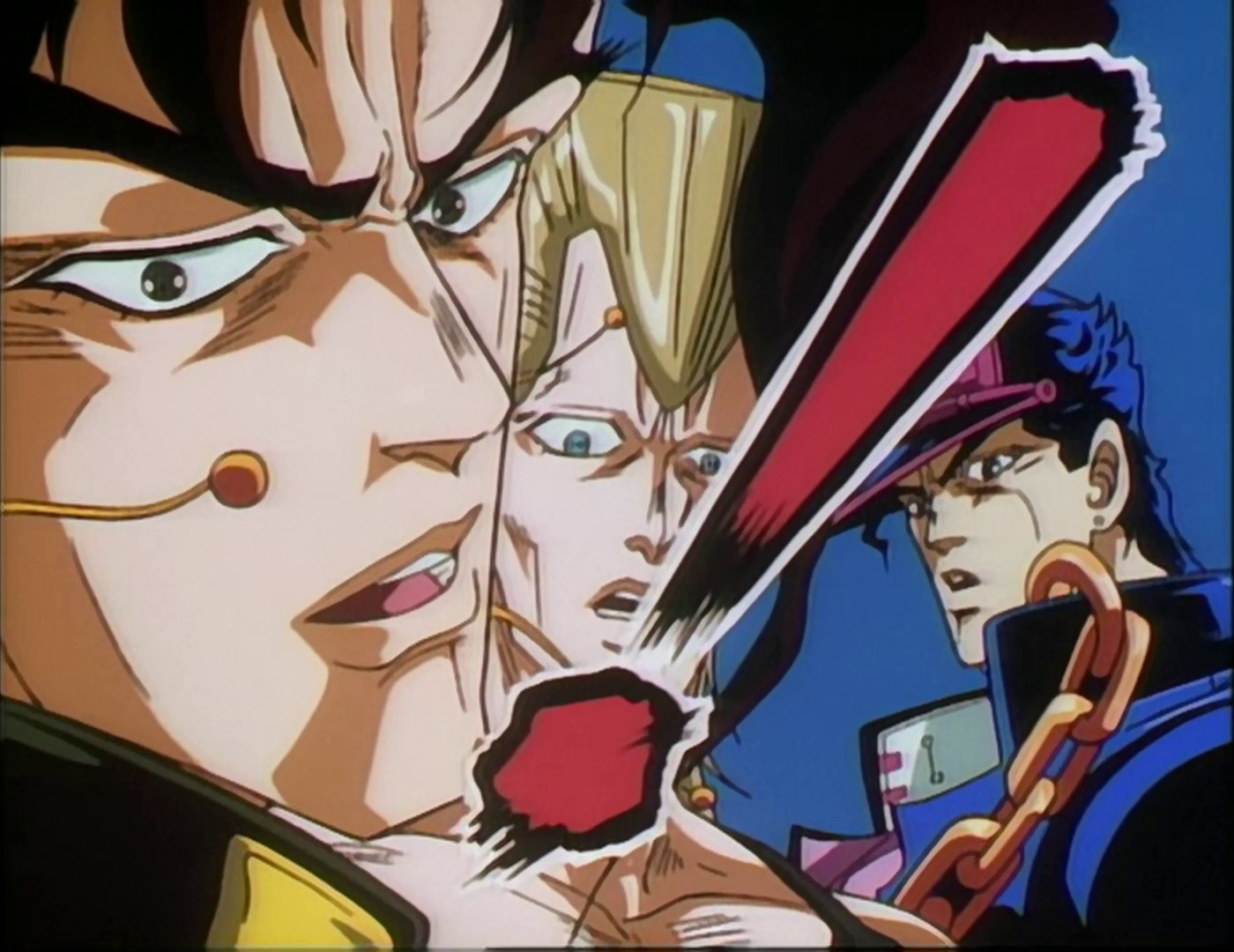
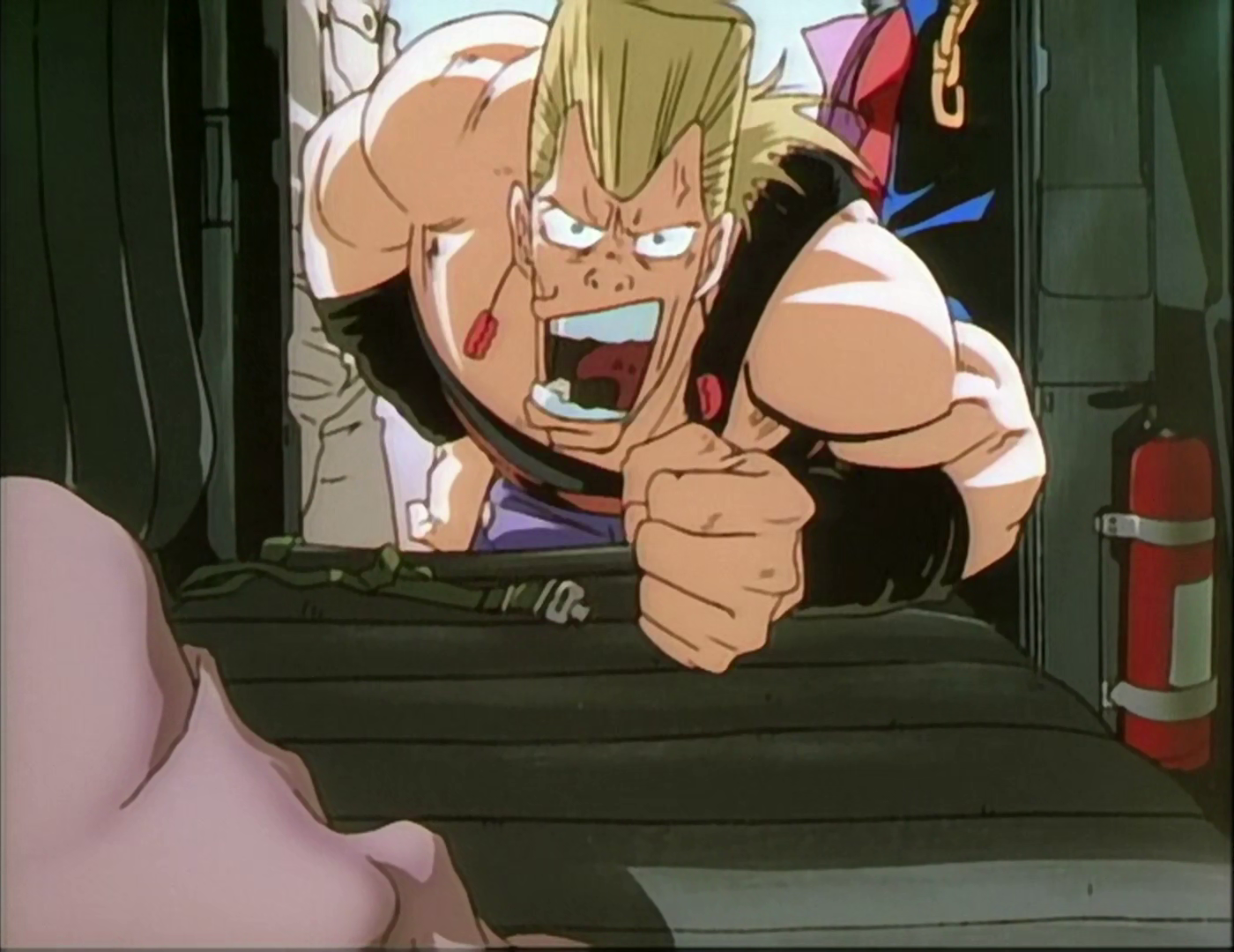
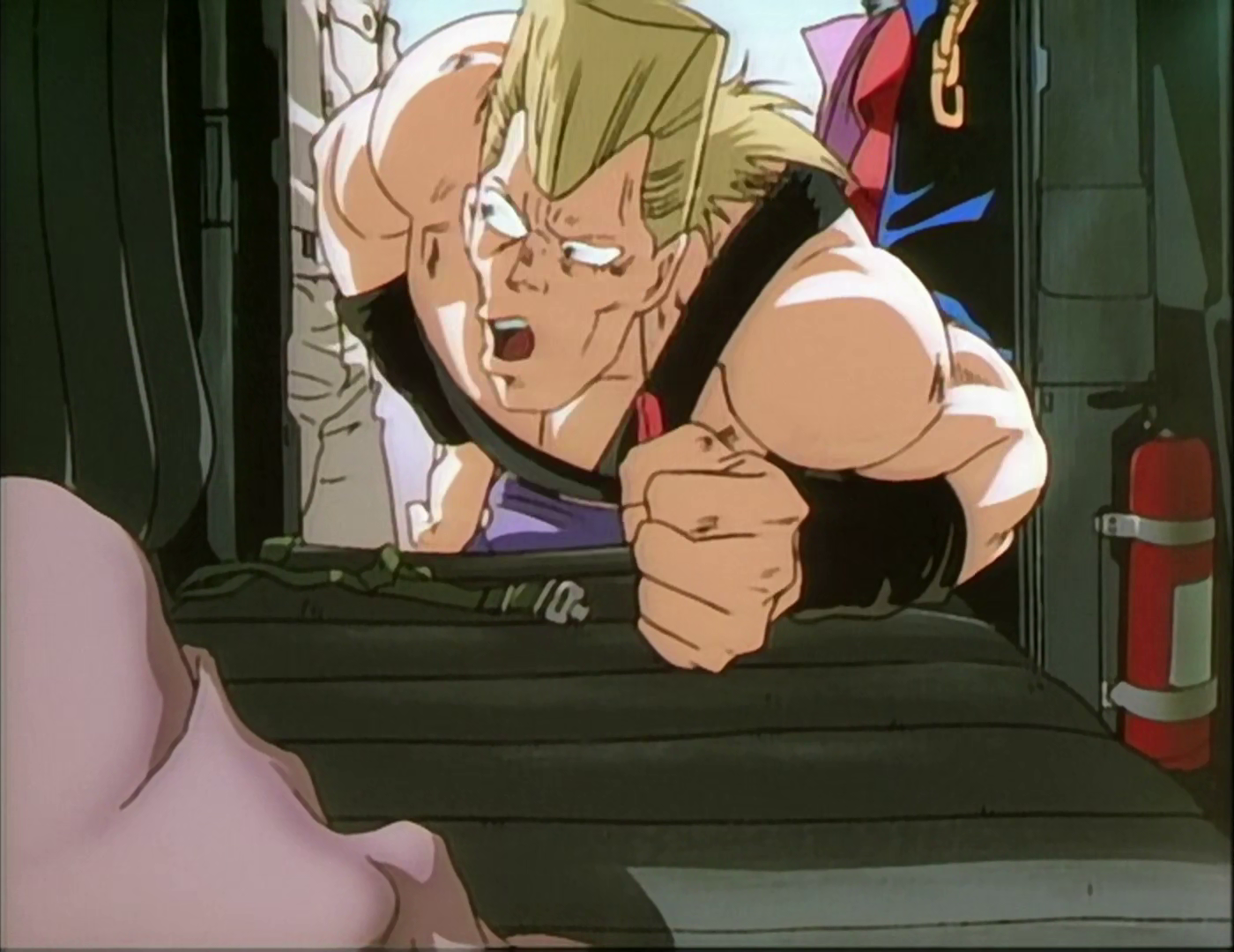
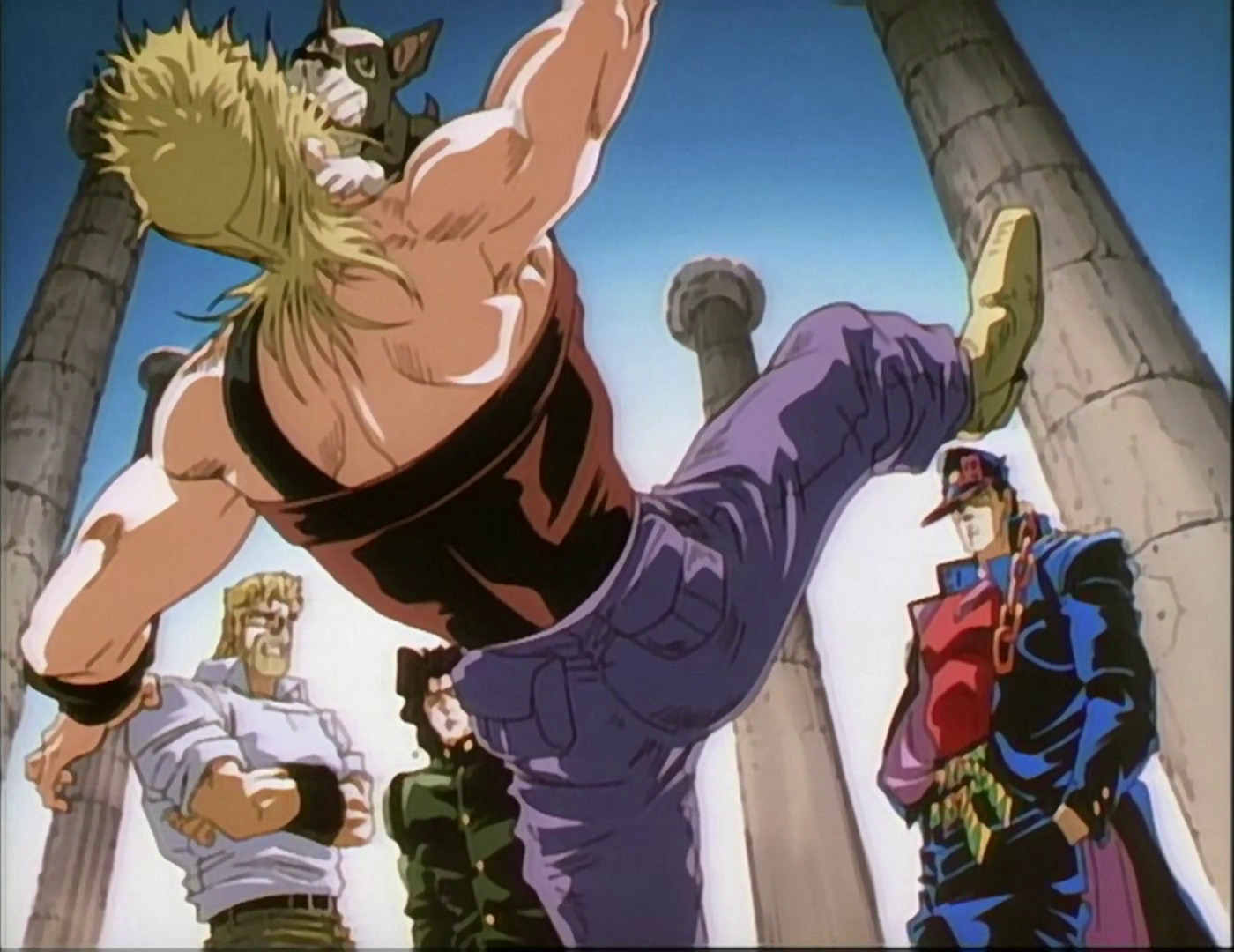
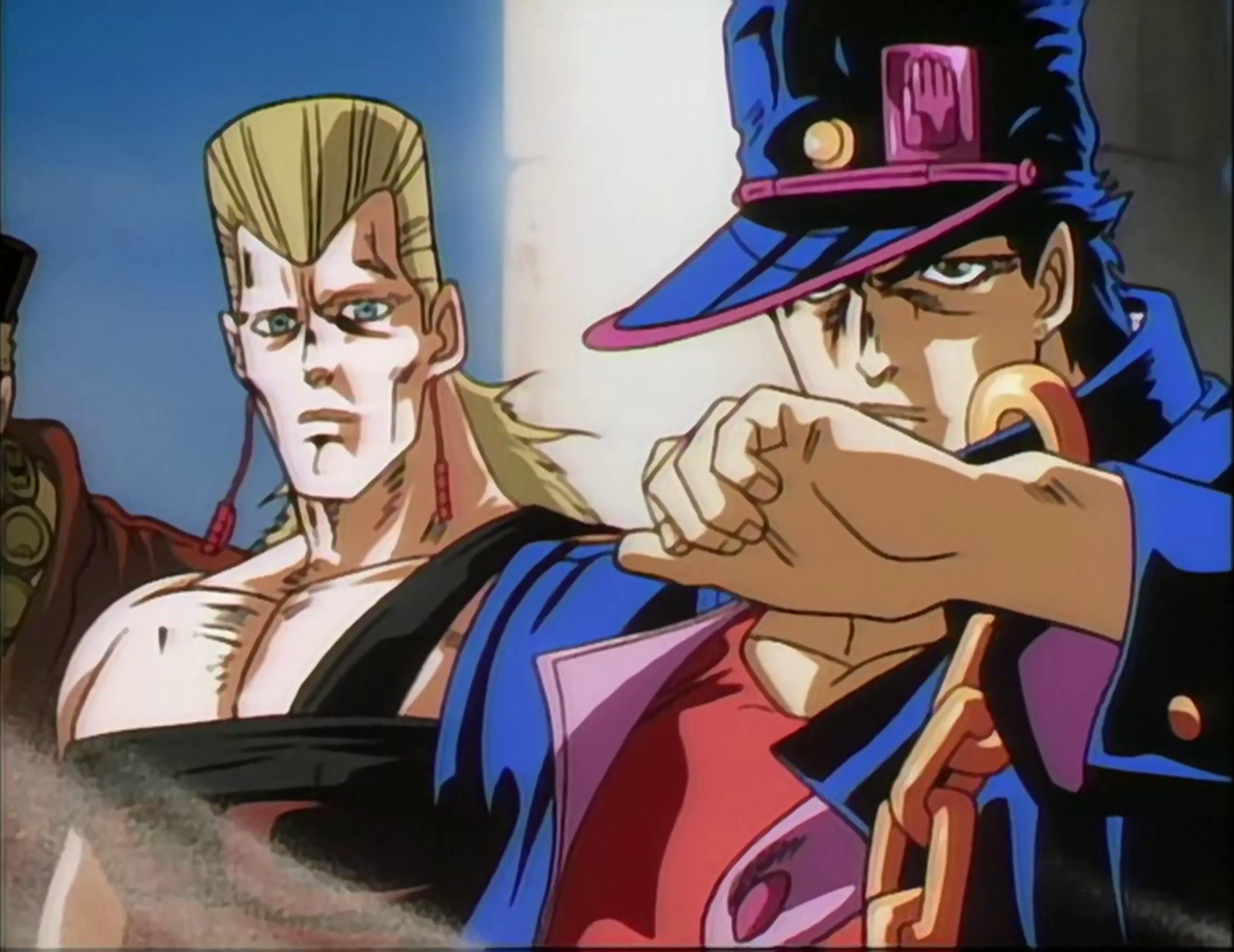
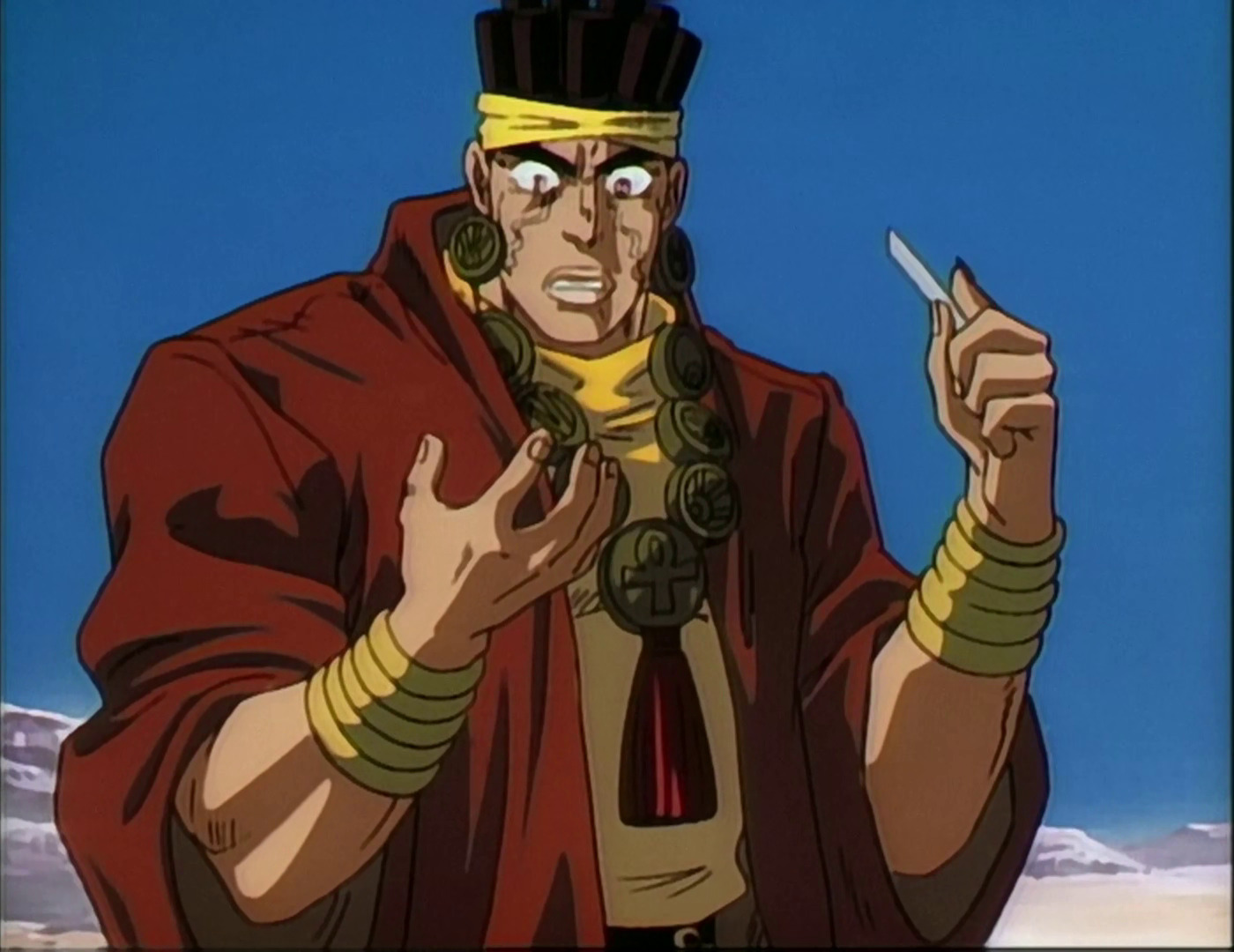
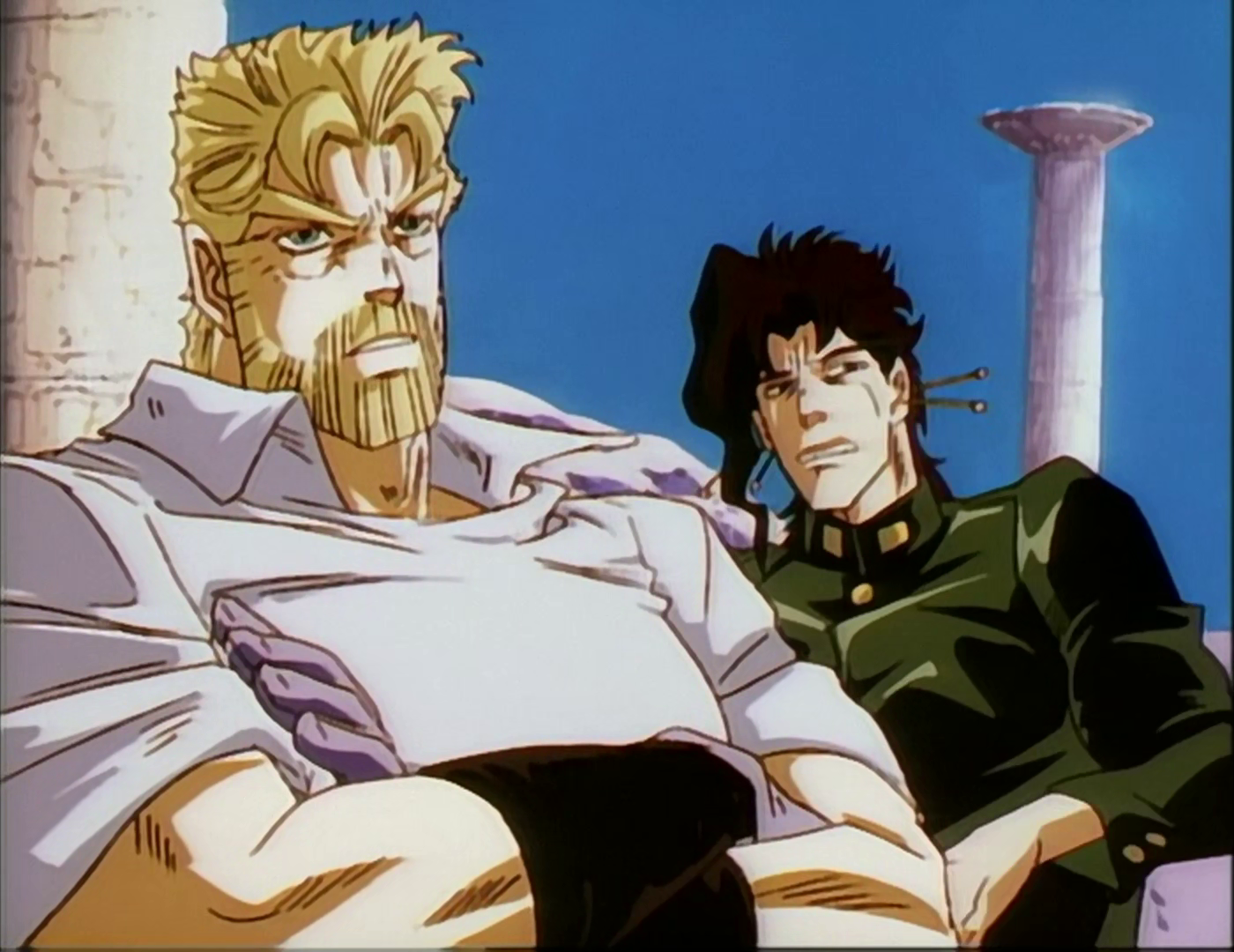
i think that's a good introduction to some of the more general aspects i really admire about this version. click "next" to proceed further into this episode and episode 09.
 |  | |
| home | next |